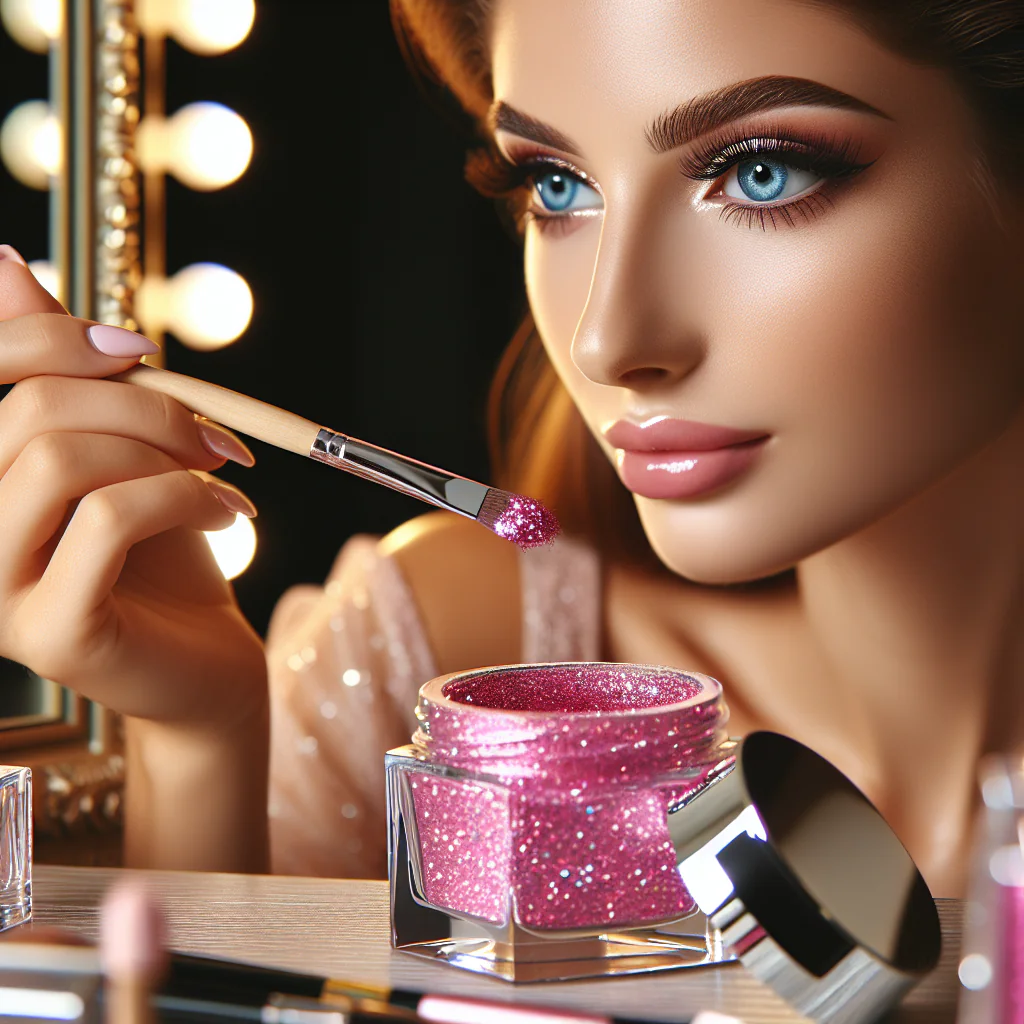-
Table of Contents
“Shine Safely: Your Guide to Choosing FDA-Approved Cosmetic Glitter!”
Discover the beauty of FDA-approved cosmetic glitter! Before you buy, ensure you’re choosing safe and high-quality products. Check for certifications, ingredient transparency, and suitable particle sizes. Elevate your beauty routine with confidence! [Learn more here](https://www.glittersmall.com/cosmetic-grade-glitter/).
Introduction
When it comes to enhancing beauty and creativity, cosmetic glitter has become a popular choice for makeup enthusiasts and professionals alike. However, not all glitter is created equal, and safety should be a top priority. FDA-approved cosmetic glitter is specifically formulated to be safe for use on the skin, minimizing the risk of irritation or adverse reactions. Before purchasing, it’s essential to look for key factors such as ingredient transparency, compliance with safety regulations, and suitability for your intended use. Understanding these aspects will help ensure that you choose a product that not only adds sparkle to your look but also prioritizes your health and well-being.
Understanding Cosmetic Grade Glitter: What Makes It FDA-Approved?
When it comes to enhancing beauty and creativity in cosmetics, glitter has become a popular choice among consumers and professionals alike. However, not all glitter is created equal, and understanding what makes Cosmetic Grade Glitter FDA-approved is essential for ensuring safety and compliance. The U.S. Food and Drug Administration (FDA) plays a crucial role in regulating cosmetic products, including glitter, to ensure they are safe for use on the skin. This regulation is particularly important given the potential for skin irritation or allergic reactions that can arise from using non-compliant products.
To begin with, the term “Cosmetic Grade Glitter” refers to glitter that is specifically manufactured for use in cosmetics and personal care products. Unlike craft glitter, which may contain harmful substances or sharp edges, Cosmetic Grade Glitter is designed to be safe for application on the skin. The FDA does not specifically approve glitter as a standalone product; rather, it evaluates the safety of the ingredients used in the glitter and the overall formulation of the cosmetic product in which it is included. Therefore, when looking for FDA-approved glitter, it is essential to consider the entire cosmetic product rather than just the glitter itself.
One of the primary factors that contribute to the FDA’s approval of cosmetic glitter is the materials used in its production. Cosmetic Grade Glitter is typically made from non-toxic materials such as polyester, which is safe for skin contact. Additionally, the glitter must be free from heavy metals, harmful chemicals, and other potentially hazardous substances. Manufacturers are required to adhere to strict guidelines regarding the sourcing and processing of these materials to ensure that they meet safety standards. Consequently, consumers should always check the ingredient list on cosmetic products to confirm that the glitter is made from approved materials.
Moreover, the size and shape of the glitter particles also play a significant role in determining their safety for cosmetic use. The FDA recommends that glitter particles be of a certain size to minimize the risk of irritation or injury to the skin and eyes. Larger particles are generally considered safer, as they are less likely to become airborne or cause harm if they come into contact with sensitive areas. Therefore, when purchasing cosmetic glitter, it is advisable to choose products that specify their particle size and confirm that they are suitable for cosmetic use.
In addition to material safety and particle size, manufacturers of FDA-approved cosmetic glitter must also conduct thorough testing to ensure their products do not cause adverse reactions. This testing often includes dermatological assessments and stability studies to evaluate how the glitter interacts with other ingredients in the formulation. By prioritizing safety and efficacy, reputable brands can provide consumers with confidence in their products.
Ultimately, when seeking FDA-approved cosmetic glitter, it is crucial to choose products from reputable brands that prioritize safety and transparency. Reading labels, researching ingredients, and understanding the manufacturing processes can help consumers make informed decisions. By being diligent in their choices, individuals can enjoy the dazzling effects of glitter while ensuring their skin remains healthy and protected. In conclusion, understanding the criteria that make glitter FDA-approved is essential for anyone looking to incorporate this sparkling element into their beauty routine safely.
Key Ingredients to Check in FDA-Approved Cosmetic Glitter.
When considering the purchase of FDA-approved cosmetic glitter, it is essential to pay close attention to the key ingredients that comprise these products. The formulation of cosmetic glitter can significantly impact not only its aesthetic appeal but also its safety and compatibility with various skin types. Therefore, understanding the ingredients is crucial for making an informed decision.
First and foremost, one should look for cosmetic glitter that is made from non-toxic materials. The FDA has established guidelines to ensure that cosmetic products are safe for use, and this includes the materials used in glitter formulations. Commonly, cosmetic glitter is made from polyethylene terephthalate (PET), a type of plastic that is generally recognized as safe for cosmetic use. This synthetic material is favored for its durability and ability to reflect light, creating the desired sparkle without posing significant health risks. However, it is important to verify that the glitter is specifically labeled as cosmetic-grade, as craft glitters may contain harmful additives that are not suitable for skin application.
In addition to the base material, one should also consider the presence of colorants in the glitter. FDA-approved cosmetic glitters often utilize color additives that have been tested for safety and efficacy. These colorants can be derived from natural sources, such as mica or iron oxides, or they may be synthetic dyes. When examining the ingredient list, it is advisable to look for color additives that are explicitly approved for use in cosmetics. This ensures that the glitter not only provides the desired visual effect but also adheres to safety standards set forth by regulatory bodies.
Moreover, it is prudent to check for any potential allergens or irritants in the ingredient list. Some individuals may have sensitivities to certain substances, such as fragrances or preservatives, which can lead to adverse reactions when applied to the skin. Therefore, opting for glitter that is free from common allergens and irritants can help mitigate the risk of skin irritation or allergic responses. Many brands now offer hypoallergenic formulations, which are specifically designed to be gentle on sensitive skin.
Another important aspect to consider is the presence of biodegradable options. As environmental concerns continue to rise, many consumers are seeking products that are not only safe for personal use but also for the planet. Biodegradable glitter is typically made from plant-based materials, such as cellulose, and breaks down more easily in the environment compared to traditional plastic glitters. When selecting cosmetic glitter, looking for certifications or labels indicating that the product is biodegradable can be a responsible choice for eco-conscious consumers.
Lastly, it is advisable to research the brand’s reputation and commitment to safety. Reputable brands often provide transparency regarding their ingredient sourcing and manufacturing processes. Reading customer reviews and checking for any certifications can further guide consumers in making informed choices. By prioritizing these key ingredients and considerations, individuals can confidently select FDA-approved cosmetic glitter that not only enhances their beauty but also aligns with their health and environmental values. Ultimately, being informed about the components of cosmetic glitter empowers consumers to make choices that reflect their personal standards for safety and sustainability.
Safety Standards for Using Cosmetic Grade Glitter in Beauty Products
When it comes to enhancing beauty products, cosmetic glitter has become a popular choice among consumers and manufacturers alike. However, the safety of these glitters is paramount, especially given the sensitive nature of skin and the potential for adverse reactions. Therefore, understanding the safety standards for using cosmetic-grade glitter is essential for anyone looking to incorporate this sparkling element into their beauty routine.
First and foremost, it is crucial to recognize that not all glitter is created equal. The glitter used in arts and crafts, for instance, may contain harmful substances that are not suitable for skin application. In contrast, cosmetic-grade glitter is specifically formulated to meet stringent safety standards set forth by regulatory bodies such as the U.S. Food and Drug Administration (FDA). These standards ensure that the materials used in cosmetic glitter are safe for human use, particularly when applied to the skin or around sensitive areas like the eyes.
One of the primary considerations when evaluating cosmetic glitter is its composition. Cosmetic-grade glitter is typically made from materials such as polyester, which is non-toxic and safe for skin contact. Additionally, it is essential to look for glitters that are free from heavy metals, such as lead and cadmium, which can pose serious health risks. Manufacturers of cosmetic glitter are required to adhere to guidelines that limit the presence of these harmful substances, thereby ensuring a safer product for consumers.
Moreover, the FDA mandates that any color additives used in cosmetic glitter must be approved for use in cosmetics. This means that the pigments and dyes used to create vibrant colors in glitter must undergo rigorous testing to confirm their safety. As a result, consumers can have greater confidence in the products they choose, knowing that they have been subjected to thorough evaluations. It is advisable to check for labels indicating that the glitter is made with FDA-approved color additives, as this serves as a reliable indicator of safety.
In addition to composition and color additives, the manufacturing process of cosmetic glitter also plays a significant role in its safety. Reputable manufacturers will follow Good Manufacturing Practices (GMP), which are guidelines that ensure products are consistently produced and controlled according to quality standards. This includes maintaining a clean production environment, using high-quality raw materials, and conducting regular testing for contaminants. By choosing glitter from manufacturers who adhere to these practices, consumers can further mitigate the risk of adverse reactions.
Furthermore, it is important to consider the intended use of the glitter. For example, glitter designed for use in eye makeup must be specifically labeled as safe for that purpose. The delicate skin around the eyes is particularly susceptible to irritation, so using products that are not formulated for this area can lead to discomfort or allergic reactions. Therefore, always check product labels and descriptions to ensure that the glitter is suitable for your intended application.
In conclusion, while cosmetic glitter can add a delightful sparkle to beauty products, it is essential to prioritize safety when making a purchase. By understanding the safety standards that govern cosmetic-grade glitter, including its composition, color additives, manufacturing practices, and intended use, consumers can make informed choices. Ultimately, selecting FDA-approved cosmetic glitter not only enhances beauty but also ensures a safer experience for all users.
Q&A
1. **What ingredients should I check for in FDA-approved cosmetic glitter?**
Look for glitters made from safe materials such as polyester, mica, or natural minerals, and ensure they are labeled as non-toxic and suitable for cosmetic use.
2. **How can I verify if a cosmetic glitter is FDA-approved?**
Check the product packaging for an FDA approval statement or certification, and research the brand’s website for compliance with FDA regulations regarding cosmetic products.
3. **Are there specific certifications to look for in cosmetic glitter?**
Look for certifications such as cruelty-free, vegan, or hypoallergenic, in addition to FDA approval, to ensure the product meets your ethical and safety standards.
Conclusion
When purchasing FDA-approved cosmetic glitter, it is essential to look for products that are specifically labeled as safe for cosmetic use, check for compliance with FDA regulations, ensure they are free from harmful additives, and verify that they are suitable for the intended application (e.g., face, body, or eyes). Additionally, consider the source and brand reputation, as well as any available customer reviews to ensure quality and safety.









